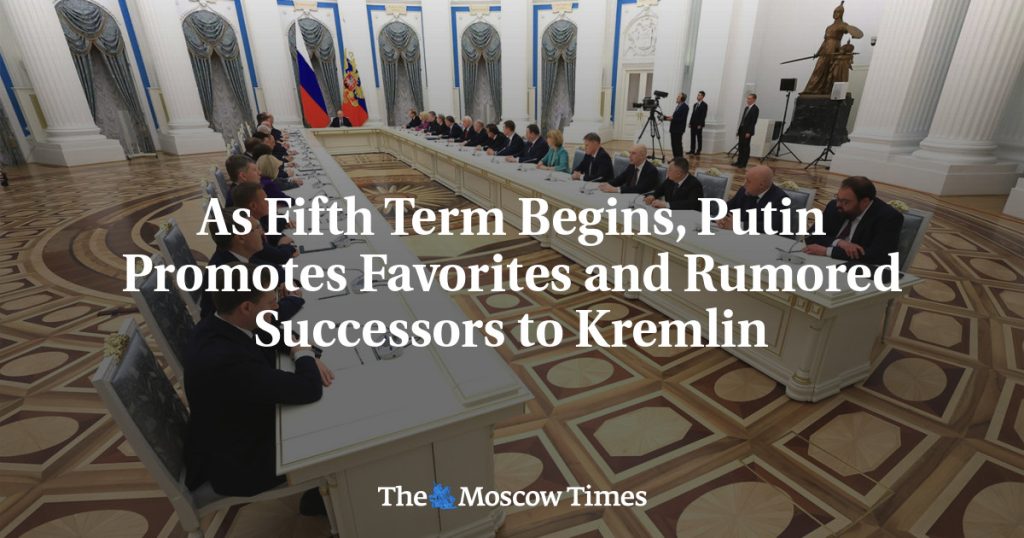President Vladimir Putin has finalized the roster of his administration and government as he begins his fifth term, with new appointments signaling his intention to maintain the status quo both domestically and in the war in Ukraine. The main focus of the reshuffle seemed to be the removal of those who failed in the military invasion of Ukraine, with familiar faces remaining in key positions. One surprising appointment was Alexei Dyumin, a former personal security guard of Putin’s, who has been named as a potential successor to both ex-Defense Minister Sergei Shoigu and Putin himself. Dyumin will oversee the military-industrial complex and balance Shoigu’s influence.
Shoigu’s reassignment to head the Security Council after his removal as defense minister is seen as an unambiguous downgrade due to his failures in Ukraine. Ultra-hawk Nikolai Patrushev’s dismissal as Security Council chief and appointment as a presidential aide overseeing shipbuilding suggests a planned resignation. However, Patrushev will still have direct access to Putin, a valuable resource in the Russian government. Another favorite of Putin, Maxim Oreshkin, was promoted to a more significant role as assistant to the president, overseeing the Economic Development Ministry’s work. The reshuffles also indicate a shift towards assigning specific industries to certain factions within Putin’s circle.
Exiled former Prime Minister Mikhail Kasyanov believes that Putin’s strategy in Ukraine is to win through attrition, rather than engaging in blitzkrieg tactics. The appointment of economist Andrei Belousov as defense minister reflects Putin’s expectation of a prolonged war. Despite these changes, Putin’s core team has largely remained intact from his previous term, showing his satisfaction with the state of affairs in the Kremlin and government. Key officials like Anton Vaino, Alexei Gromov, and Sergei Kiriyenko continue in their roles, signaling continuity in Putin’s administration.
While many expected sweeping personnel changes after Putin’s inauguration, the lack of major shifts indicates a desire for stability within Putin’s administration. The decision to keep long-standing officials in place suggests a sense of contentment with the current team’s performance. The appointment of individuals close to Putin or his allies, such as the “princes” in key government positions, reflects a trend towards maintaining loyalty within Putin’s inner circle. Overall, Putin’s reshuffle of his administration and government shows a commitment to continuity and the maintenance of power within his close circles, particularly in the context of the ongoing conflict in Ukraine.


